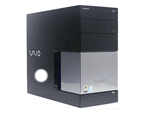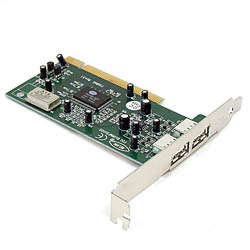NETWORKING
Basic
Networking
Network-A
group of interconnected computers that share resources and information.
Connected
computers sharing resources is referred to as networking
Stand-Alone-
Computers not connected to a network
Comparing
Peer to Peer vs. Client-Server
Client
- a workstation used to request services from a dedicated server or
another client
Server-
provides services to requestor a dedicated server is recommended for
10 clients or more computers
Peer
to Peer- Networked Computers that both requests and provides network
services
Peer to Peer implementations: (use to network 10 or less computers)  Advantages: Lower Cost, Easy to setup and good for temporary network setup
Disadvantages:
Limited growth, No central location, Weak Security, To many passwords
Server
Based implementations: (use to network 10 or more computers)

Advantages:
Centralized management, Strong Security, Expansion and Create redundant systems
Disadvantages:
Expensive, difficult to implement and Central Point of failure
Comparing
Servers
Non Dedicated Server vs. Dedicated Server
File
Server-offers services that allow users to share files Includes storing,
retrieving, and moving data
Print
Servers-The print server controls the queue or spooler, which hold
jobs till ready
Application
Servers- Allows client to access and use extra computing power and
extensive software applications that reside on a shared computer SQL
backend does all the processing
Other Servers - Database, Proxy Servers, Mail, FTP, DNS, DHCP, RAS, Web, Directory and Newsgroup
Workgroup
vs. Domain
Workgroup
model, every computer in the network has equal access to one another
and is responsible and maintains its own set of users and passwords.
Domain
model maintains a single database of user logins for the entire network
Comparing Share-Level Security vs. User-Level Security
Peer
to Peer use share level security to assign resources not as safe (password
base)
Client Server use user level security Admin gives rights before anyone can access PC (permission base) Types of Networks
LAN
- Local Area Network a group of computers connected within a building
or a campus (Example of LAN may consist of computers located on a
single floor or a building or it might link all the computers in a
small company.

WAN
- A network consisting of computers of LAN's connected across
a distance WAN can cover small to large distances, using different
topologies such as telephone lines, fiber optic cabling, satellite
transmissions and microwave transmissions.

MAN
- A network of LAN's that covers a city or large campus environment
 PAN - Personal Area Network 
Other
types of networks
CAN - Campus Area Network
WLAN
- Wireless LAN
GAN - Global Area Network
SAN
- Storage Area Network
What
hardware components do we need in order to network computers?
All networks share common elements, including: We need computers  or or
 or or

Questions
to ask before we network?
Will the computer be used as a client or a server? What specifications will we need to setup a network? CPU: Pentium IV or AMD Athlon Memory: SDRAM or RDRAM Hard Drive Capacity: 50-150GB
We
need resources, files and applications to share
We can share printers, scanners and programs such as MS Office Applications. 

We
need network cards
 Things to look for when buying a network card Bus: PCI, PCI-X, PCIe, ISA, CNR, PCMCIA, Express Card, USB, Firewire or integrated Connector: RJ45, USB, Firewire, BNC, Wireless or Fiber Optic Ports (ST/SC/MTRJ/LC) Manufacturer: Intel, 3COM or Netgear (issues with drivers) Speed: 10, 100 or 1000Mbps (Standard Ethernet, Fast Ethernet and Gigabit Ethernet) Access Method: CSMA/CD and CSMA/CA  BNC BNC
 RJ45
RJ45
Manufacturer:
Intel, NetGear, DLink, Linksys, Real Tek (issues with drivers)
Each NIC card has a unique ID called the MAC (Media Access Control) Address or Physical Address (48bits)
First
3 Positions identifies the Manufacturer ID and the last 3 Positions
identifies the NIC Card ID
00 – A0 – 00 – BB – E1 – 8F - FF
to
view the NIC's MAC address (START>RUN>CMD>IPCONFIG /ALL)
or WINIPCFG (9x) from the run menu
NIC cards must implement a standard signaling methodology to gains access to a network. Access Method: How a network device will communicate with one another CSMA/CD CS (Carrier Sense) Before transmitting, listen for signal; if none is found, it is the OK to transmit MA (Multiple Access) All computers share the same media and signaling techniques. CD (Collision Detection) Detect collisions, wait and retransmit
CSMA/CA
CS (Carrier Sense) Before transmitting, listen for signal; if none is found, it is the OK to transmit MA (Multiple Access) All computers share the same media and signaling techniques. CD (Collision Avoidance) Avoid collisions, wait and retransmit
Token
Passing - Token is passed sequentially to each computer on
the network based on a NIC's ID.
Baseband vs. Broadband Broadband transmissions enable two or more communication channels to share the bandwidth of the transmission media. Broadband networks can simultaneously accommodate video, voice and data. Most DSL and Cable modem providers use broadband communications. Baseband transmissions enable digitals signals over a single frequency. With baseband transmission, the entire communication channel capacity is used to transmit a single date signal. Most LAN’s today use baseband technology. Multiplexing divides a transmission facility into two or more channels. The two main ways to share a channel are time division multiplexing and frequency division multiplex. Full Duplex vs. Half Duplex communication Full Duplex is a type of communication which can send data both directions simultaneously. For example, on a full duplex network one workstation can be sending data while another is receiving data at the same time. Half Duplex is a type of communication which can send data both directions, but not at the same time. For example, a workstation can send data and then immediately receive data, but cannot transmit and receive simultaneously. Crossover cables
Packets
vs. Frames
What are frames? A frame can be defined as the unit of data transferred across the network, defined at the data link (network access) layer of the protocol stack. NIC card sends data in discrete chunks called frames (and has the following typical information)
Preamble – All Ethernet Frames begin with a Preamble 64bit series of 1’s and 0’s This is the start of a frame MAC Address – Media Access Control a Unique ID of a NIC card 48bits (Recipient and Sender)
Length
– An Ethernet Frame carry up to 1500 bytes of data in a single
frame
Data – Information Data of what the frame carries Pad – Will add extra data if not 64 bytes in size CRC-Cyclic Redundancy Check is used for correction Within the frames are information called packets What are packets? A packet can be defined as the unit of data at any layer of the protocol stack, prior to, or after transmission Packets contains the following information Data Type Packet Count Recipient’s IP address Sender's IP address Data
Packets
contains the following information
|
Monday, 11 February 2013
NETWORKING
Subscribe to:
Post Comments (Atom)
VMware Cloud Learning Video's
Here is a nice summary list of all VMworld US 2018 Breakout session with the respective video playback & download URLs. Enjoy! Bra...
-
Different types of bra Welcome to this post, we are here to help you with the different types of bras out there and help you make the ...
-
Tirukkuraḷ Tirukkuṛaḷ ( Tamil : திருக்குறள் also known as the Kural ), sometimes spelt 'Thirukkural, is a classic of couplets or Kur...
-
Here is a nice summary list of all VMworld US 2018 Breakout session with the respective video playback & download URLs. Enjoy! Bra...

No comments:
Post a Comment